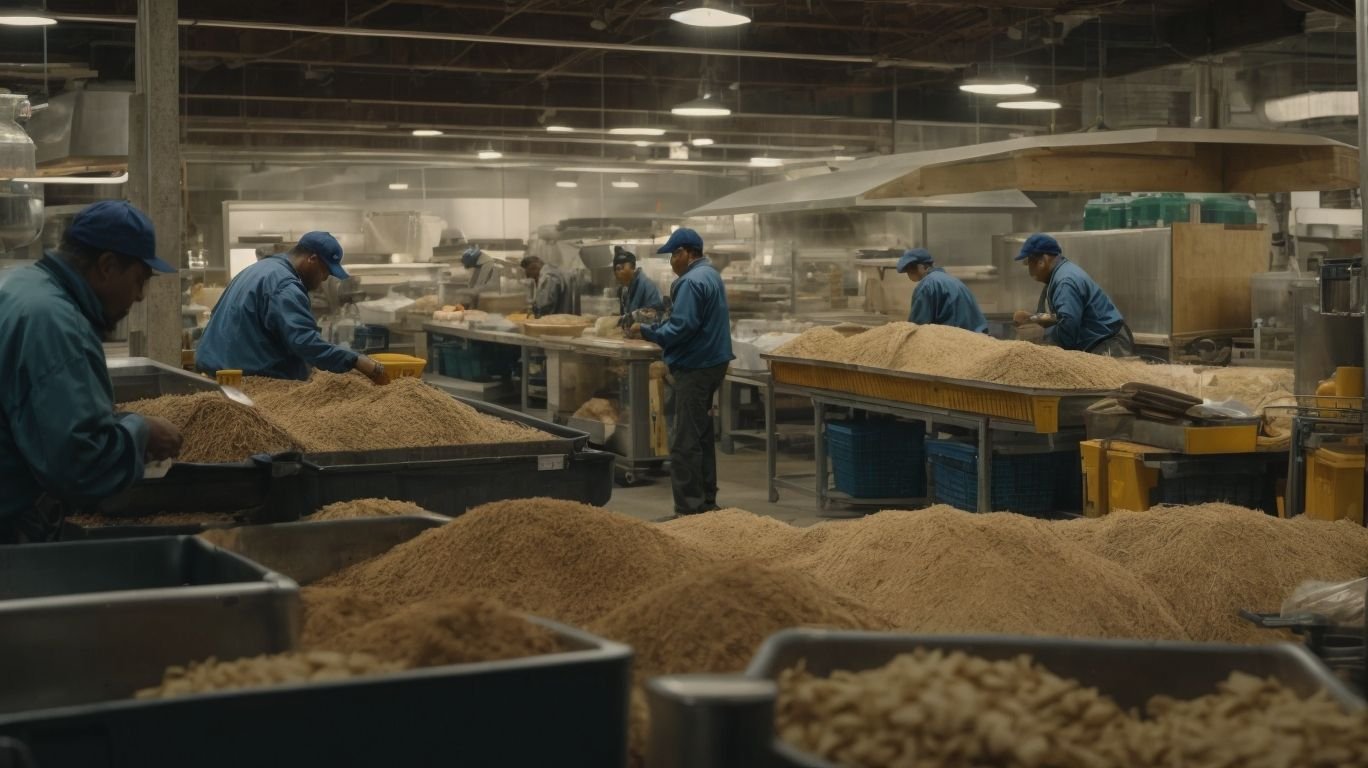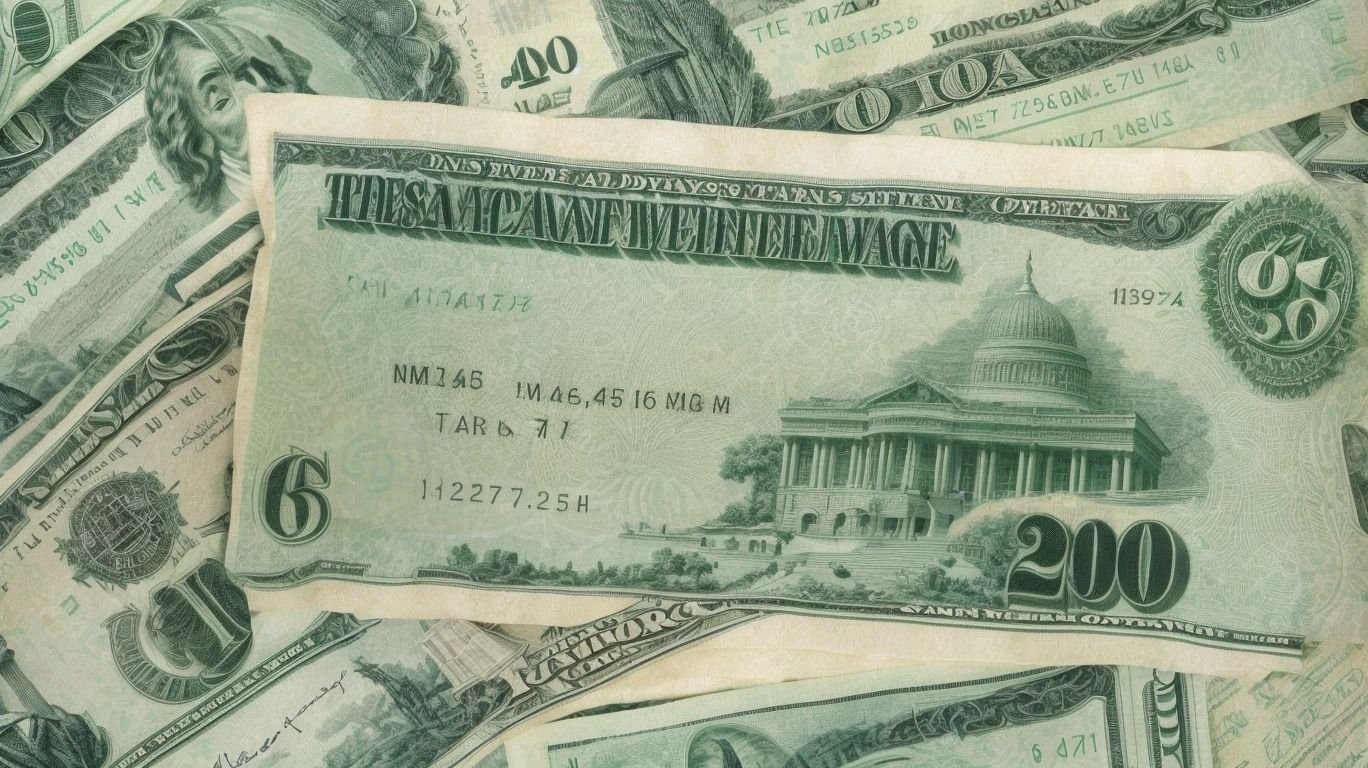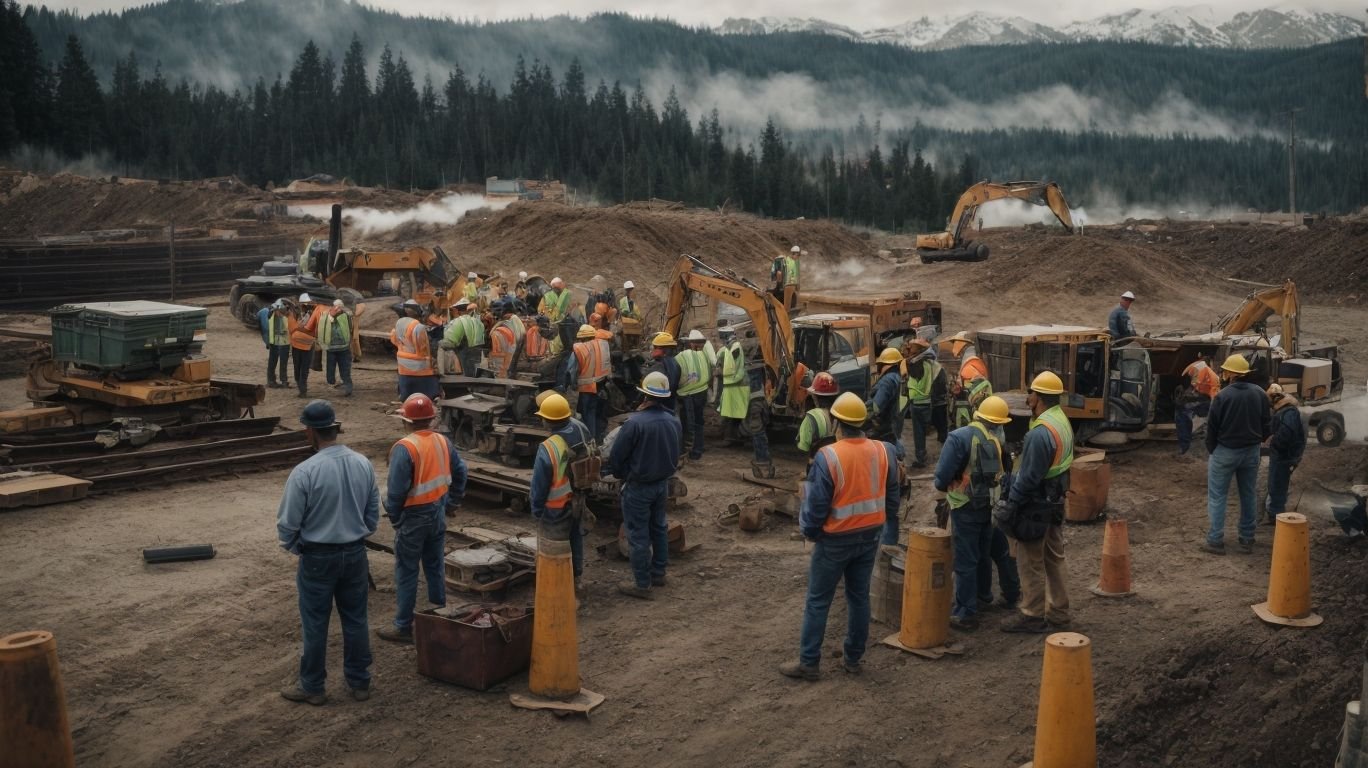Washington state has been at the forefront of the fight for a higher minimum wage, with a steady increase in its minimum wage over the years. In 2021, the minimum wage in Washington state stands at $13.69 per hour, one of the highest in the country. This increase has brought to light the benefits and concerns of raising the minimum wage and its impact on the state’s economy.
The minimum wage in Washington state is determined through a ballot initiative, as opposed to a legislative decision. This means that the voters have a say in the minimum wage increase, making it a more democratic process. This has been a significant factor in the state’s steady increase in the minimum wage.
There are several benefits to a higher minimum wage, including:
- Reduces Poverty: A higher minimum wage can help reduce poverty rates and improve the standard of living for low-wage workers.
- Increases Consumer Spending: With more disposable income, minimum wage workers are likely to spend more, boosting the local economy.
- Boosts Local Economies: A higher minimum wage can contribute to the growth of local economies by increasing the purchasing power of low-wage workers.
However, concerns have also been raised about raising the minimum wage, including:
- Job Loss: Some argue that a higher minimum wage could lead to job loss as businesses may not be able to afford to pay their employees.
- Increased Costs for Small Businesses: Small businesses may struggle to cover the costs of a higher minimum wage, potentially leading to closures.
- Inflation: There are concerns that an increase in the minimum wage could lead to inflation and ultimately negate its impact.
The effects of Washington state’s minimum wage increase have been mostly positive, with studies showing:
- Positive Impact on Low-wage Workers: The increase in the minimum wage has benefited low-wage workers, reducing income inequality.
- Minimal Impact on Employment: The increase has not shown a significant impact on employment rates, contrary to concerns raised by critics.
- Increase in Consumer Spending: The increase has led to an increase in consumer spending, boosting the local economy.
Other states can learn from Washington’s experience in raising the minimum wage, including the importance of:
- Adjusting for Inflation: It is vital to adjust the minimum wage for inflation to ensure that it remains fair for workers.
- Impact on Local Economies: A higher minimum wage can have a positive impact on local economies, benefiting both workers and businesses.
- A Balanced Approach: A balanced approach, taking into consideration the concerns of both workers and businesses, is necessary for a successful minimum wage increase.
As the minimum wage continues to increase in Washington state, workers and businesses alike can prepare by staying informed and planning accordingly for future increases.
Key Takeaways:
What Is the Minimum Wage in Washington State?

Photo Credits: Humanresources-Hr.Com by Terry White
The minimum wage in Washington State is $13.69 per hour, and is adjusted annually to account for inflation. This rate applies to most workers, although there are exceptions for certain categories such as agricultural workers or those under the age of 16.
The Washington State Department of Labor & Industries is responsible for setting and enforcing the state’s minimum wage laws in order to ensure that workers are fairly compensated.
How Is the Minimum Wage Determined in Washington State?
- Research and Recommendations: In Washington State, the Department of Labor & Industries considers the Consumer Price Index and reviews studies to determine changes to the minimum wage.
- Public Input: The state holds public hearings and accepts written comments to gather input from citizens and stakeholders in the decision-making process.
- Legislative Approval: Before any changes are made, the state legislature evaluates the recommendations and public input to make a final decision.
- Implementation: Once approved, the new minimum wage rates are put into effect on the specified date.
What Are the Benefits of a Higher Minimum Wage?

Photo Credits: Humanresources-Hr.Com by William Walker
As the debate over minimum wage continues to heat up, one question remains at the forefront: what are the benefits of a higher minimum wage? In this section, we will delve into the positive effects of raising the minimum wage, including its potential to reduce poverty, increase consumer spending, and boost local economies. Each of these sub-sections will explore the specific ways in which a higher minimum wage can positively impact individuals, communities, and the economy as a whole.
1. Reduces Poverty
- Educate about financial literacy to empower individuals to manage their money effectively and reduce poverty.
- Provide access to affordable housing and healthcare to alleviate financial burdens and decrease poverty rates.
- Create job training and educational programs to enhance employability and help lift individuals out of poverty.
- Implement progressive tax policies to redistribute wealth and support low-income individuals, ultimately working towards reducing poverty.
By addressing these aspects, communities can work towards reducing poverty and ensuring economic stability for all.
2. Increases Consumer Spending
- Increased disposable income leads to higher consumer spending on goods and services, which can stimulate economic growth and create job opportunities.
- Greater consumer spending can also prompt businesses to expand operations or hire additional staff in response to the raised demand for goods and services.
- Ultimately, this cycle of increased consumer spending can contribute to overall economic growth and job creation.
3. Boosts Local Economies
- Encourages local spending, as increased wages lead to higher disposable income for workers.
- Supports small businesses, as local consumers have more purchasing power.
- Boosts local economies, as increased consumer spending stimulates demand for goods and services and leads to economic growth.
What Are the Concerns about Raising the Minimum Wage?

Photo Credits: Humanresources-Hr.Com by Gary Baker
As Washington state continues to raise its minimum wage, concerns have been raised about the potential consequences of this decision. In this section, we will discuss the various concerns surrounding the increase in minimum wage, including the potential for job loss, increased costs for small businesses, and the impact on inflation. By examining these concerns, we can gain a better understanding of the potential effects of raising the minimum wage and its implications for the economy.
1. Job Loss
- Assess the impact: Analyze the potential job loss in the specific industry due to increased labor costs.
- Implement efficiency measures: Introduce technology or process improvements to offset any potential job reductions.
- Consider alternative solutions: Explore options such as phased wage increases or targeted subsidies for affected businesses.
- Engage in dialogue: Foster open communication between policymakers, businesses, and labor representatives to address concerns and find viable solutions.
It’s essential to approach the potential job loss resulting from minimum wage increases with a comprehensive strategy that takes into account industry-specific nuances and promotes collaboration among all stakeholders.
2. Increased Costs for Small Businesses
When the minimum wage increases, small businesses often face challenges due to increased costs. This can lead to tough decisions such as reducing staff or increasing prices to offset the higher labor expenses. This is a significant concern as small businesses employ nearly 50% of the private-sector workforce in the US.
3. Inflation
- Evaluate the impact of 3. inflation on essential goods and services using the Consumer Price Index.
- Analyze the correlation between wage growth trends and the inflation rate.
- Implement cost-effective strategies, such as adjusting prices or optimizing operational efficiencies, to mitigate the effects of inflation.
What Are the Effects of Washington State’s Minimum Wage Increase?

Photo Credits: Humanresources-Hr.Com by Mark Ramirez
With the recent increase in Washington State’s minimum wage, many have been curious about the effects it has had on the economy. In this section, we will delve into the various impacts of the minimum wage increase. First, we will discuss the positive impact it has had on low-wage workers, followed by the minimal impact it has had on employment rates. Finally, we will explore the potential increase in consumer spending as a result of higher minimum wages. By examining these effects, we can gain a better understanding of the long-term implications of minimum wage policies.
1. Positive Impact on Low-wage Workers
- Positive Impact on Low-wage Workers: A higher minimum wage directly boosts the income of low-wage workers, reducing financial strain.
- Improved Standard of Living: With increased earnings, workers can afford better housing, healthcare, and education.
- Reduced Income Inequality: A higher minimum wage narrows the wealth gap, promoting economic fairness.
2. Minimal Impact on Employment
- Studies show that there is minimal impact on employment due to various factors such as increased productivity, reduced turnover, and potential small price increases.
- Businesses can adjust by streamlining processes, investing in technology, and implementing efficient work practices.
- Workers may experience increased job stability, improved morale, and potential opportunities for upskilling.
To mitigate any potential impact, businesses can focus on employee training, performance incentives, and operational efficiencies. Workers can prepare by enhancing their skills, remaining adaptable, and staying informed about market trends and demands.
3. Increase in Consumer Spending
- As disposable income increases, consumers tend to spend more on goods and services.
- With higher wages and increased consumer confidence, there is an uptick in spending on non-essential items.
- This trend also encourages investment in local businesses, leading to overall economic growth.
To fully capitalize on the benefits of an increase in consumer spending, businesses can concentrate on diversifying their product offerings and implementing effective marketing strategies, while workers can prioritize budgeting and financial planning.
What Can Other States Learn from Washington’s Minimum Wage Increase?

Photo Credits: Humanresources-Hr.Com by Christopher Sanchez
As the first state to implement a $15 minimum wage, Washington has garnered attention and sparked debates across the nation. However, beyond the headlines and political arguments, there are valuable lessons to be learned from Washington’s experience. In this section, we will delve into the key takeaways for other states considering a minimum wage increase. We’ll discuss the importance of adjusting for inflation, the impact on local economies, and the need for a balanced approach in implementing such a change. Let’s explore what other states can learn from Washington’s minimum wage revelations.
1. The Importance of Adjusting for Inflation
- Understand Inflation: Recognize that as time progresses, the value of money decreases due to inflation.
- Regular Wage Reviews: Conduct periodic evaluations to adjust the minimum wage in line with inflation rates.
- Economic Impact Assessment: Analyze the potential effects on businesses and workers before implementing any adjustments.
It’s crucial to stay vigilant about the impact of inflation on minimum wage to ensure fair compensation for all workers.
2. The Impact on Local Economies
The effects of the minimum wage increase in Washington State on local economies are significant. As low-wage workers have more disposable income, they tend to spend more within their communities, resulting in a boost for local businesses. While there may be concerns about increased costs for small businesses, the increased consumer spending helps to mitigate them.
It is crucial for other states to carefully analyze the potential impact of a minimum wage increase on their local economies and find a balanced approach to addressing any concerns.
3. The Need for a Balanced Approach
- Consider both the benefits and concerns of raising the minimum wage.
- Analyze the potential impacts on low-wage workers, employment, and consumer spending.
- Evaluate the importance of adjusting for inflation, the impact on local economies, and the need for a balanced approach.
How Can Workers and Businesses Prepare for Future Minimum Wage Increases?

Photo Credits: Humanresources-Hr.Com by Vincent Hill
- Evaluate finances: In light of potential minimum wage increases, workers and businesses should assess their current financial status.
- Adjust budgeting: To account for higher labor costs, it is important to revise budgets and forecast future expenses.
- Enhance productivity: To offset increased wage expenses, measures to improve efficiency and productivity should be implemented.
- Explore automation: Businesses can consider implementing automation options to streamline operations and reduce reliance on manual labor.
- Develop skills: Workers can increase their value in the job market and potentially earn higher wages by enhancing their skills.
Frequently Asked Questions
What is the current minimum wage in Washington state and how does it compare to other states?
The current minimum wage in Washington state is $16.28 per hour, making it the highest in the country. This is a 3.4% increase from the previous year and is adjusted annually based on the Federal Consumer Price Index for Urban Wage Earners and Clerical Workers.
Are there any cities in Washington with a higher minimum wage than the state?
Yes, cities like Seattle and SeaTac have the ability to set a higher minimum wage. Effective January 1, 2024, minimum wage rates in Seattle will increase to $19.97 per hour for employers with 501+ employees, $19.97 per hour for employers with 500 or fewer employees, or $17.25 per hour if the employer pays $2.72 per hour toward medical benefits or the employee earns $2.72 per hour in tips. In Tukwila, minimum wage rates will increase to $20.29 per hour for employers with 501+ employees, $18.29 per hour for employers with 15-500 employees, and $16.28 per hour for employers with 1-14 employees.
Who is eligible for the new Washington state minimum wage?
Workers who are 16 years old and older will be eligible for the new minimum wage, while those who are 14 or 15 years old may be paid $13.84 per hour. Some cities in Washington have different minimum wage rates based on employer size and annual gross revenue.
What are the changes to Washington state’s Paid Sick Leave Law?
Effective January 1, 2024, the Paid Sick Leave Law in Washington state will now cover construction workers who often work for multiple employers within a month and may not reach the 90-day requirement with a single employer. This means that employers with construction workers covered under the North American Industry Classification System (NAICS) Code 23 will be required to pay accrued but unused sick leave upon the worker’s separation from employment. Employers engaged solely in residential building construction will not be affected by this change.
How does Washington’s minimum wage compare to the federal minimum wage?
Washington state’s minimum wage is currently $16.28 per hour, while the federal minimum wage is $7.25 per hour. This is an 85 percent difference, with Washington’s minimum wage being more than double the federal minimum wage. However, some states have higher minimum wages than Washington, such as California’s minimum wage for fast food workers at $20 per hour.
What are the rules for paid sick leave in Washington state?
Washington’s Paid Sick Leave Law requires employers to provide workers at least one hour of paid sick leave for every 40 hours worked, starting on the worker’s first day of work. Workers can only use





